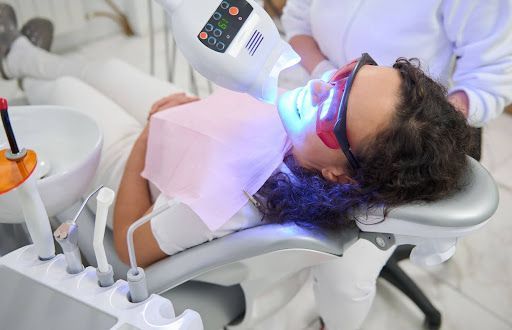Managing Orthodontic Pain: Practical Tips
Embarking on the journey towards a straighter smile often involves orthodontic treatment, which can sometimes bring about discomfort. This discomfort is a natural part of the process as teeth gradually adjust to new positions. For many individuals, managing orthodontic pain effectively can significantly enhance their overall experience. By implementing practical tips and strategies, individuals can minimize discomfort and ensure a more comfortable journey throughout their orthodontic treatment. From simple lifestyle adjustments to targeted pain management techniques, there are various approaches available to help individuals navigate through the challenges of orthodontic treatment with greater ease.
Understanding Orthodontic Pain
Orthodontic treatment, including braces and aligners, represents a significant step towards achieving a healthier smile. The journey often involves navigating through periods of discomfort, primarily when adjustments are made. Understanding the nature of this discomfort and why it occurs can equip patients with the right mindset to manage it effectively. The discomfort associated with orthodontic treatment often stems from the movement of teeth. Braces and aligners exert continual pressure on teeth to move them into their correct positions. This pressure can lead to a range of sensations, from mild tenderness to more pronounced soreness.
The human mouth is not initially accustomed to the presence of orthodontic devices. When braces are installed or aligners are first worn, the unfamiliar pressure against teeth and the rubbing of brackets or aligners against soft oral tissues can cause irritation. This discomfort is most noticeable after initial placement and subsequent adjustments, which are essential for the gradual movement of teeth. As teeth shift, the periodontal membrane (the tissue that surrounds and supports the teeth) stretches on one side and compresses on the other, which can be quite uncomfortable.
The force applied by orthodontic devices is carefully calculated to promote optimal tooth movement without causing damage. This necessary pressure can still result in temporary soreness. The sensations might range from dull aches that last for a few days to sharper pains that subside more quickly. The intensity and duration of the pain can vary widely among individuals, influenced by personal pain thresholds, the specifics of the orthodontic treatment, and how well the aftercare instructions are followed.
Patients need to recognize that while discomfort is common, it's a sign that the treatment is working. The teeth and jaw are adapting to new positions, a process that is integral to achieving the desired outcome of orthodontic care. Patients are encouraged to communicate with their orthodontist about their discomfort levels, as this feedback can be valuable in adjusting treatment plans for maximum comfort and effectiveness.
Ultimately, knowing that orthodontic pain is a temporary and natural part of the process can help patients manage their expectations and adhere to their treatment plans. With the right strategies and support, the discomfort can be minimized, making the journey to a beautiful smile as smooth as possible.
Soothing Solutions for Orthodontic Pain
Finding relief from orthodontic discomfort is key to ensuring a smooth journey towards a straighter smile. Orthodontic pain, often experienced as soreness or tenderness in the teeth and gums, can be managed effectively with a range of soothing solutions. From simple home remedies to specialized products, there are various approaches available to alleviate discomfort and promote comfort during orthodontic treatment.
Over-the-Counter Pain Relievers
One of the first lines of defense against orthodontic discomfort is over-the-counter (OTC) pain relievers. Nonsteroidal anti-inflammatory drugs (NSAIDs), such as ibuprofen or naproxen, are effective in reducing both pain and inflammation. Taking a dose an hour before your orthodontic appointments can help preempt adjustment discomfort. It's important to follow the dosage instructions on the label and consult with your orthodontist or pharmacist, especially if you have health conditions that might conflict with their use.
Cold Compresses and Ice Packs
Applying cold compresses or ice packs to the outside of your mouth can significantly reduce inflammation and numb the area, decreasing pain. This method is particularly helpful during the first few days after getting braces tightened or after wearing new aligners. Ensure the cold pack is wrapped in a thin towel to protect your skin and limit its application to 15-20 minutes to prevent tissue damage.
Oral Anesthetics
Topical gels or ointments containing benzocaine can be applied directly to the gums and sore spots in your mouth for immediate pain relief. These products are available over the counter and can be particularly useful at night to ensure a better sleep. It's essential to use them as directed to avoid over-application, which could lead to further oral health issues.
Soft Foods Diet
Adjusting your diet to include soft foods that require minimal chewing can dramatically reduce strain on your teeth and gums. Smoothies, soups, yogurt, and well-cooked vegetables are not only gentle on your mouth but also nutritious options that aid in healing and overall health. Avoiding hard, sticky, or crunchy foods can prevent additional pain and damage to your braces.
Orthodontic Wax
Orthodontic wax is an invaluable tool for anyone with braces. Applying a small amount over irritating brackets can create a smooth surface and prevent sores and cuts inside your mouth. This simple measure can make a significant difference in daily comfort.
Salt Water Rinses
Regular salt water rinses can help reduce inflammation and accelerate the healing of any sores or cuts inside the mouth. Dissolve a teaspoon of salt in a cup of warm water and swish it around your mouth for 30 seconds. This solution's natural healing properties make it a gentle, effective way to soothe oral tissues.
Gentle Oral Hygiene Practices
Maintaining oral hygiene is crucial during orthodontic treatment but requires a gentle approach when you're experiencing discomfort. Use a soft-bristled toothbrush and fluoridated toothpaste, and floss carefully to avoid aggravating sensitive areas. An antiseptic mouthwash can also help keep your mouth clean and discomfort at bay, contributing positively to your overall orthodontic experience. By incorporating these soothing solutions into your orthodontic care routine, you can significantly reduce discomfort and ensure your treatment progresses with minimal interruptions.
As we've explored various methods to manage and alleviate orthodontic discomfort, from over-the-counter pain relievers to gentle oral hygiene practices, it's crucial to recognize when discomfort signals the need to consult your orthodontist. It's also important to remember the role of patience and time in your orthodontic journey.
Knowing When to Contact Your Orthodontist
Orthodontic adjustments shouldn't cause unbearable pain. If you experience extreme discomfort, prolonged pain beyond a few days, or damage to your braces or aligners (like broken wires or brackets), it's time to contact your orthodontist. These could be signs of improper alignment, a need for appliance adjustment, or potential injury to your oral tissues. Your orthodontist can provide professional advice, make necessary adjustments, or offer targeted treatments to resolve the issues, ensuring your comfort and the effectiveness of your treatment. Always err on the side of caution and reach out if you feel something isn't right with your treatment.
The Role of Patience and Time
Embracing the orthodontic process with patience is perhaps as crucial as any direct method for mitigating discomfort. The journey towards a perfect smile is a marathon, not a sprint. Some discomfort is an integral part of the process, indicative of progress as your teeth gradually shift to their new positions. It's vital to keep the end goal in sight and not be discouraged by temporary setbacks or periods of discomfort. Most patients find that after the initial adjustment period, discomfort significantly decreases. As your mouth becomes accustomed to the appliances, and you integrate the soothing strategies discussed, such as using dental wax, maintaining a soft food diet, and applying cold compresses, these measures become less a response to acute pain and more a part of routine care.
Orthodontic treatment unlocks numerous benefits, from improved oral health to a more confident smile. Navigating the accompanying discomfort effectively can make your orthodontic journey more comfortable and rewarding. Employing a combination of over-the-counter remedies, natural treatments, and modifications to your diet and oral care routine can considerably ease your experience. The backbone of a successful treatment is a good relationship with your orthodontist and a healthy dose of patience and perseverance. Remember, every day with braces brings you one step closer to the beautiful smile you've envisioned. In time, the memory of discomfort fades, leaving only the lasting satisfaction of achieving your orthodontic goals.
Ready to make your orthodontic journey as comfortable as possible? Discover practical tips for managing orthodontic pain with McAllister Orthodontics. Our team is dedicated to ensuring your experience is smooth and pain-free.












